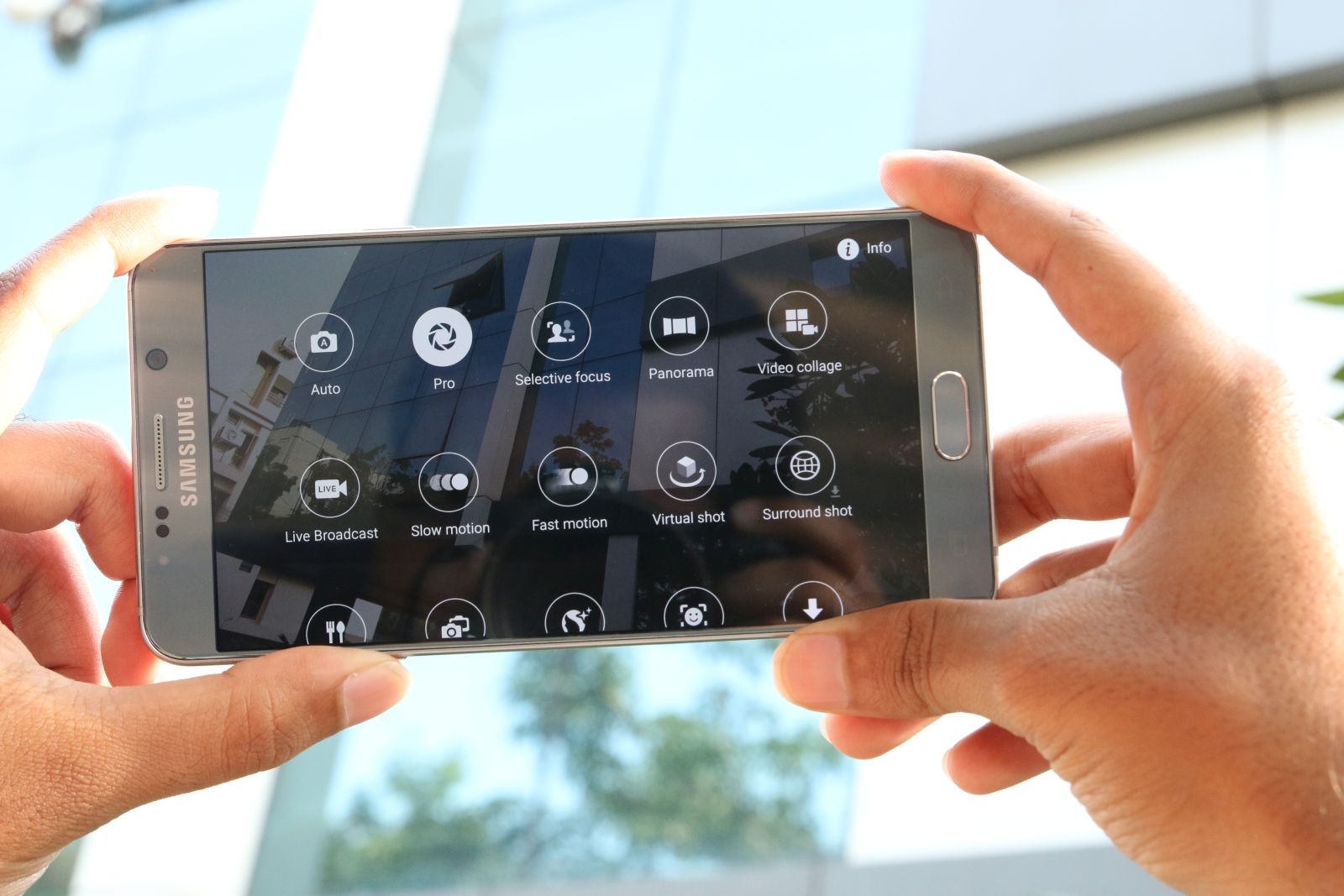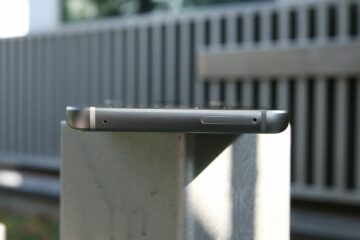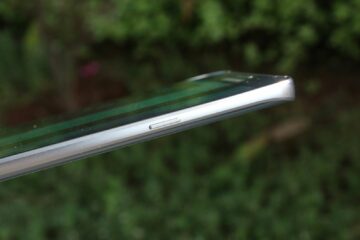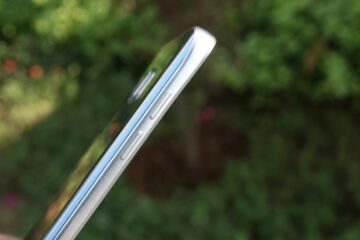This year, Samsung has been all about design. All the plastic on its flagships has been given the boot, replaced by metal and glass for a level of premium never before seen on the company's smartphones. But the improved design has also brought in limitations; we've seen batteries become smaller because of the thin bodies, while the expandable storage that was a staple on Galaxy smartphones has also disappeared (at least on flagship ones.)
For the Galaxy Note lineup, these omissions stand out more than they do on the Galaxy S6 or Galaxy S6 edge, as Galaxy Note devices have always been packed to the hilt with features that a power user would demand. Of course, non-removable batteries and non-expandable storage are far from the only things that a power user requires, but that has nonetheless disappointed many Galaxy Note fans when it comes to the Galaxy Note 5.
Adding to that is the fact that the Note 5 isn't available in all markets, so it's not surprising Samsung's new decisions haven't been received well by some of its existing consumers. But apart from the aforementioned features, the Galaxy Note 5 continues the tradition of featuring the latest and greatest the smartphone world has to offer, including an S Pen stylus that's further improved from last year's iteration while looking and feeling more like a regular pen.
But is the Galaxy Note 5 the upgrade that we expect a new Galaxy Note device to be? Well, let's kick off this review and find out!
Design
At first glance, the Galaxy Note 5 has a very unassuming design; it's a Galaxy S6 that has been made larger and had the curves on its edges reduced. Speaking of curves, the back is where we see a major design change compared to every existing Galaxy Note (or Galaxy S) device. See, all that metal and glass can make your smartphone really slippery, so Samsung took those two curves we see on the Galaxy S6 edge+ display and put them on the back of the Note 5.
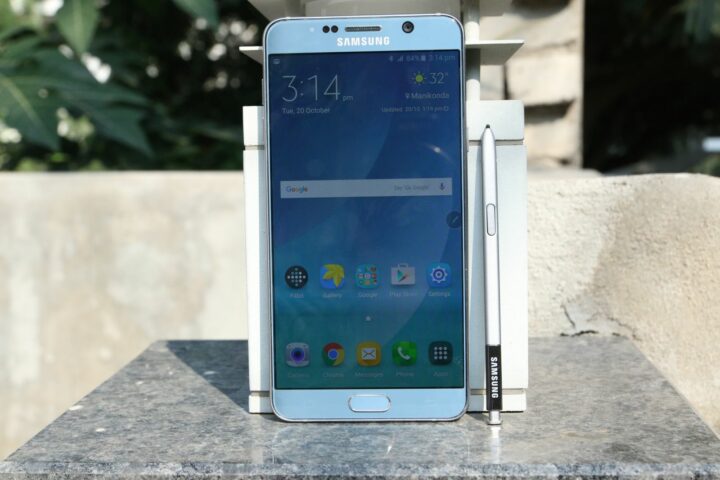
The result? A metal and glass device that doesn't slip as much as it should. The curves on the back don't actually make this thing considerably more ergonomic than the S6 edge+ or other metal/glass phablets, but they do make the phone stick to your hands ever so slightly and make one-hand usage easier. Samsung isn't willing to back off from making its flagships truly premium, and the rear curves on the Note 5 are a great attempt from the company at compensating for the issues a premium build introduces, especially on a smartphone with a 5.7-inch display.
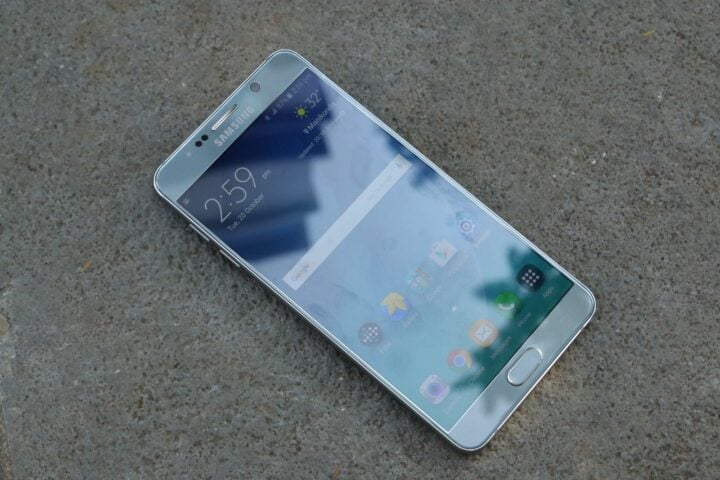
The Galaxy Note 5 has top-notch build quality, but when it comes to looks, we have to say it doesn't evoke any awe. There were times the gold version of the Note 5 looked very similar to the gold Galaxy A8 at first glance, though the silver version does make it stand apart from other devices. The Galaxy Note 4 impressed us more last year despite not being as premium; we're not saying the Galaxy Note 5 looks bad, we're just saying it doesn't appeal to our design sensibilities as much as we would have liked.

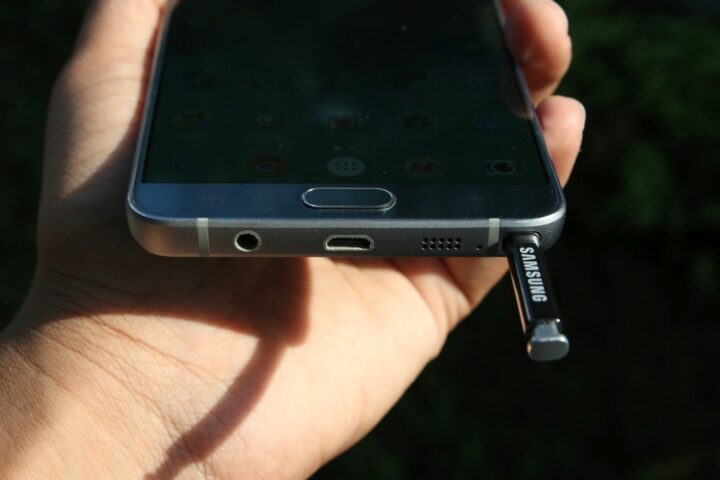
Display
Like the Galaxy Note 3 and Galaxy Note 4, the Note 5 comes with a 5.7-inch Super AMOLED screen, with a resolution of 2560×1440 pixels (the Note 3 had a 1080p display, but the same screen size). The Note 4 had a beautiful display, and its successor makes things better. Colors pop, the screen can go very bright and very dark, blacks are as black as can be, and the viewing angles are great. Whites have always been blueish on Super AMOLED displays, but our Galaxy Note 5 unit had whites that looked impressively whiter than what we've seen in the past.

In fact, Samsung has also done some work on the Basic screen mode, which portrays accurate colors but has always made the screen too yellow. On the Note 5, the Basic mode doesn't do that as much, and we really think this mode is the best it has ever been for those who like natural colors on their smartphones. For others, the AMOLED Cinema and Adaptive Display modes are still present for providing the Super AMOLED experience many have come to love over the years.
Overall, the Galaxy Note 5 has one of the best displays in the industry. For most consumers it can actually be considered the best, similar to the displays on the Galaxy S6 edge+ and even the original Galaxy S6 lineup. There was one issue, however, at the time of this review. The screen would sometimes stop responding to touches, requiring a press of the power button a few times before things got back to normal. An unofficial fix for this is available, but Samsung will need to issue a software update to make it permanently go away.
Camera

The Galaxy Note 5 features the same 16-megapixel camera sensor as the Galaxy S6 edge+, Galaxy S6 edge, and Galaxy S6, with optical image stabilization and an aperture of F1.9. The camera app can be launched by double pressing the home button anywhere in the interface, and its performance is among the best in the industry. Images taken in good light (especially outdoors) have great detail, with accurate colors and impressive depth of field (or bokeh effect, as it's more famously called). Samsung has been criticized for blowing up the contrast in images, but it looks like the company has pared that down a bit on the Note 5.
In dark conditions, the F1.9 lens combines with the optical image stabilization and Samsung's impressive software processing to produce pictures with a fair amount of light, though there's naturally much less detail than what we would see during the day. The Note 5 comes with a Pro mode for shooting images, and this mode offers options like shutter speed and ISO control for those that like to take a lot of images in non-ideal lighting.

Samsung has also added a couple of new camera modes, including one called Live Broadcast. In this mode, you can stream whatever you're recording to your friends via YouTube. Setting up Live Broadcast is not too intuitive, but once you're done with the initial process the thing works very well. There's also something called Video Collage, which lets you take four 6-second videos and then combines then into a single video. Speaking of videos, the Note 5 is a capable camcorder. A lot of detail gets captured, and image stabilization keeps things, well, stable for the most part.
Overall, the Galaxy Note 5 has everything one would need in a smartphone camera, and it continues to showcase how Samsung is ahead of the competition as far as imaging is concerned. Check out a few camera samples below.


Software
The Note 5 runs Android 5.1.1 with the lightest, most beautiful, and fastest version of Samsung's TouchWiz UI till date. Samsung has been removing a lot of gimmicky features from its software this year, and the Note 5 benefits from that and offers a refined and intuitive software experience. There is still a lot of added functionality over what Google's version of vanilla Android gives you, with features like Multi Window and Smart Stay carrying over from existing Samsung devices. Download Booster is also present; most users might not discover Download Booster, Smart Stay and other such features unless they're actively looking for them, and that's because Samsung no longer launches pop-ups and reminders telling you to try them out.

The lock screen and home screen setups out of the box are similar to the ones on the Galaxy S6 lineup. Samsung's home screen launcher does the job fairly well, and for most users installing a third-party launcher won't be necessary. Samsung's keyboard is another aspect that should keep a majority of its users happy, as it's fairly accurate, looks good, and supports things like swipe input. Oh, and you also have theme support, so you can make the entire software look the way you want thanks to the plethora of available themes on the Theme Store. Samsung's theming support is pretty extensive, with themes customizing basic apps like Calculator, Messages, Phone and S Planner, the notification shade, homescreen icons, and more.
We personally think Samsung's user interface is the most intuitive among the competition, with the right mix of features, intuitiveness and simplicity. There can still be a few inconsistencies in design and visuals, but we're confident Samsung will get around to fixing them in the near future.
S Pen
The S Pen is one of the reasons why the Galaxy Note lineup is so popular, and the Note 5 has the best iteration of the stylus yet. The first thing you will notice is how the S Pen looks more like a normal pen than previous iterations. You will also notice how taking the S Pen out of its slot is not as quick as it was before, since Samsung is now using a push-to-eject mechanism that adds an extra step to the procedure. In terms of design, this was a good move, but it does get in the way when you're in a hurry and want to take a quick note.

Taking a quick note is something the Note 5 otherwise excels at thanks to the ‘Screen off memo' feature. Basically, when you take out the S Pen when the phone is locked and the screen is off, you can immediately start writing on the display. This might sound fancy, but in reality the phone simply turns on the Action Memo feature when the stylus is removed so that you don't have to do it yourself. Screen off memo is extremely useful when you want to jot down a phone number or email address, and it would have worked even better if the S Pen didn't require an extra push for removal.

Ejecting the S Pen when the phone is unlocked does what it has always done: open the Air Command menu. This floating menu offers four different options:
- Action Memo: Action Memo lets you jot down memos and then save them, or take further actions. The phone detects what you've typed and then enables possible actions; you can call or message a number you have noted down, or open a link in the browser.
- Smart Select: Smart Select is basically a screenshot feature that lets you select an area on the screen for saving as an image. This selection is then saved in the gallery or scrapbook depending on what option you select, and you can select on-screen content in various shapes (rectangular, oval, and so on.)
- Screen Write: Screen Write is similar to Smart Select, and what is does is take a screenshot of the entire screen and then let you add your own text on top with the S Pen.
- S Note: S Note is Samsung's general note taking app, and it works the same as it does on other Galaxy devices. Only, the S Pen lets you draw on the screen without using your fingers on Note devices, and that's pretty much the only extended functionality you get on the app.
On the Note 5, you also get two extra slots in the Air Command menu for adding shortcuts to apps of your choosing. In fact, you get three shortcut slots – S Note is an app shortcut as well and can be swapped out for another app. Of course, you can also use the S Pen for general usage on the device. Typing on the keyboard becomes a quick and more convenient affair when you're using the stylus, which is impressively accurate and quick at converting the touches to actual actions on the screen. Like the Galaxy Note 3 and Note 4, the S Pen works on the capacitive touch keys as well, so regular navigation through whatever you're doing on your device is almost as good as using a finger.
At the end of the day, the S Pen is still the productivity tool to match on a smartphone, and at this point we don't think there's much Samsung can do to make it better, other than adding new features on the software front.
Performance
With an Exynos 7420 processor and 4GB of RAM under the hood, the Galaxy Note 5 simply flies through anything you throw at it. The Galaxy S6 and S6 edge were smooth, but everything seems to be even smoother on the Note 5. The animations almost never falter (we did notice stutters during the Air Command opening animation), and apps launch quickly. High-end games ran fine, with nary a frame drop or stutter even after long periods of gaming. The phone did heat up during intensive tasks, but it never got uncomfortably hot at any moment.
Sadly, Samsung's aggressive RAM management still affects multitasking despite the 4GB of RAM. It helps keep the phone fast and smooth at all times, but it keeps killing background apps much before it should. If you're using a third-party keyboard, you will constantly see the keyboard taking some time to show up on screen – the aggressive RAM management kills the keyboard app's process from time to time, so you have to wait while the phone loads the process again when you need it.

Of course, it remains to be seen if the performance will be able to hold up as well after a few months of use. TouchWiz went through years of bloating before Samsung thought of optimizing it, and the only thing we can do is wait and see if the Note 5 is as quick and smooth after a round of software updates and regular usage.
It's worth mentioning the fingerprint sensor on the Note 5. It's the same sensor that Samsung has used on the Galaxy S6, S6 edge, S6 edge+, A8 and the Galaxy Tab S2, and it's very fast and accurate. You can add up to 4 different fingerprints, and adding a fingerprint is an easy, if a tad long, process. You will probably find yourself using the fingerprint sensor only for unlocking the phone, though you can also sign in to websites on the Samsung browser (this should extend to Chrome and other browsers with Android 6.0, which has native support for fingerprint scanners) with your fingerprint, lock content in Private Mode, and also prevent access to apps that support Samsung's fingerprint sensor.
Battery Life

The Galaxy Note lineup has always been known for offering the best battery life in Samsung's smartphone galaxy (pardon the pun). The Galaxy Note 4 might be suffering after the Lollipop update, but when it came out it had impressive all-day battery life. The Note 5 has a smaller battery than its predecessor (3,000 mAh vs 3,220 mAh), but thankfully the battery life hasn't suffered too much because of the downgrade in capacity.
The Note 5 wasn't capable of lasting so long that I could use it over the next day without a charge, but it did manage to survive until late evening on most days with medium usage (a bit of browsing, Facebook, WhatsApp, and four email accounts in sync.) 4 hours of screen time with 16-18 hours of total usage was a regular thing, though this was on a Wi-Fi connection. On mobile data the endurance went down considerably, but there really isn't any smartphone out there that can offer dependable battery life when it's using the mobile network for connectivity.
Like the S6 lineup, support for fast charging is a major boon here, and I found myself plugging in the phone for a few minutes now and then to quickly get back a bit of charge. It took a little over 90 minutes for the phone to charge from 0 to 100 percent, which is more or less in line with Samsung's advertised charging times. We were unable to test fast wireless charging since Samsung's new fast charger isn't easily available yet, but we will update this review if we get our hands on the charger in the near future.
Fast charging might be useful, but it's sad to see Samsung is still dangling the feature in front of consumers as an excuse for the smaller batteries it has been using its flagships this year. The Note 5's battery life isn't bad by any means, but it's also not as great as we would expect from a Galaxy Note.
Audio, Call Quality
The Note 5 features a single down-facing loudspeaker, and its performance is as good as we've seen on the Galaxy S6 devices. The speaker can get really loud (we almost never missed a call because of audibility issues), and despite a non-stereo setup, the sound produced is sufficiently deep. You can make out the beats in bass-heavy tunes, but there's also a clear focus on mid and high frequencies.
It's a similar story when you plug in the supplied earphones, though we think Samsung has turned down the focus on low frequencies (bass) a bit too much, which is especially noticeable when you crank the volume up to 100 percent. This is in stark contrast to Samsung's phones from before 2015, which were able to go much louder on the stock earphones and were also quite heavy on the beats.
Call quality was quite good; both sides were able to hear each other well, and the earpiece was loud enough even in crowded places. Network reception was excellent, and the phone was surprisingly efficient at catching a faint signal even in a building's basement at times.
Wrap Up
The Galaxy Note 5 is an excellent smartphone, and the S Pen simply puts it at the top compared to the phablet competition. Like the Galaxy S6 edge+, the Note 5 doesn't really have any serious negatives, apart from the lack of expandable storage and removable battery that some might find to be a drastic change in tradition. Performance is excellent, the display is beautiful and more accurate at the same time, the design screams premium, and the camera is one of the best the industry has to offer.
The S Pen is still an amazing tool, and that option of writing on the screen without waking up the device is a huge plus. Battery life could have been better, or at least as good as existing Note devices, but even that is more of a missed opportunity than something we would call a problem. If a large-screen smartphone with top-notch hardware is what you're looking for, the Note 5 gets a hearty recommendation. Seriously, there's no other all-rounder phablet in the market, and the Note 5 will ensure that Samsung remains undefeated in the category for the foreseeable future.
| Pros |
Cons |
| Beautiful display |
Battery life could have been better |
| Excellent camera |
No expandable storage/128GB storage model |
| S Pen has never been better |
Multitasking not that great for 4GB of RAM |
| Screaming fast performance |
| Good battery life |
| Premium albeit boring design |
 Samsung Galaxy Watch 8 review
Samsung Galaxy Watch 8 review Samsung Bespoke AI Jet Ultra review
Samsung Bespoke AI Jet Ultra review Samsung Galaxy Z Fold 7 review
Samsung Galaxy Z Fold 7 review Samsung Galaxy Z Flip 7 review
Samsung Galaxy Z Flip 7 review Samsung Galaxy S25 Edge review
Samsung Galaxy S25 Edge review Samsung S95F OLED TV review
Samsung S95F OLED TV review Samsung Q7F QLED TV review: A no-brainer purchase at its low price
Samsung Q7F QLED TV review: A no-brainer purchase at its low price Samsung S90F OLED TV review: Unreal value for money
Samsung S90F OLED TV review: Unreal value for money Samsung Galaxy S25+ review: Nails the big phone basics
Samsung Galaxy S25+ review: Nails the big phone basics





